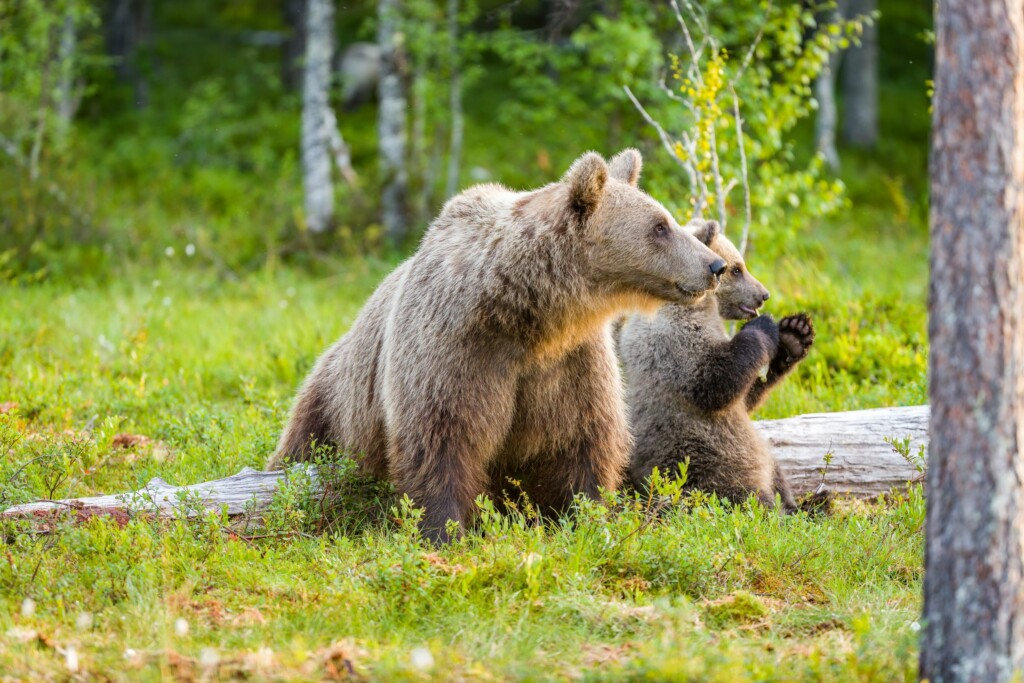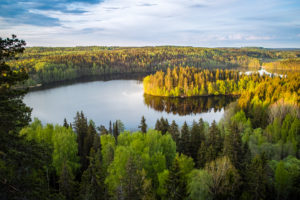The EU’s biodiversity strategy is a central part of the European Green Deal (Green Deal), the goal of which is to turn EU to a climate neutral continent. The goal is to protect at least 30% of the EU’s land and sea areas, restore weakened ecosystems throughout the EU by 2030, plant 3 billion trees and reduce the use of pesticides and the resulting risks from using pesticides by 50%.
What does biodiversity mean?
Biodiversity means the diversity of life on Earth, including different species, their genes and ecosystems. Wide biodiversity is important in terms of the functioning and stability of ecosystems, and its reduction threatens natural diversity and the functioning of ecosystems.
Protecting and restoring biodiversity is important as it plays a key role in maintaining the balance of nature as well as providing people and animals with water, food and shelter.
The deterioration of biodiversity also threatens business continuity, which is why it is important for companies to include supporting the diversity of biodiversity in their risk management and strategy. Among other things, the construction industry, agriculture and the food industry are all dependent on nature.

Biodiversity strategy goals
The EU member states are committed to the goals of the strategy, which aim to stop the loss of nature and accelerate the development of biodiversity. There are a total of 17 goals and they are related to either (1) the EU’s nature conservation network or (2) the EU’s restoration regulation.
- An EU-wide nature conservation network (1.2 million km^2) on land and sea. The goal is to expand the current Natura 2000 protection network by protecting climate-important areas and areas with high biodiversity.
- The EU’s restoration regulation, the goal of which is to oblige EU countries to protect ecosystems whose state has been found to be degraded and which have the potential to bind carbon dioxide to prevent and reduce the effects of extreme weather phenomena.
The restoration regulation focuses strongly on the revitalization of nature in the EU member states and the aim is to set binding goals that concern e.g. forests, urban areas, degraded terrestrial and marine habitats, owls and rivers and floodplains.
Other goals of the EU are to allocate 20 billion euros in annual funding for the protection and development of biodiversity and to create a global biodiversity framework.
EU Nature Conservation Network
The nature conservation network has three goals:
- Expanding the protection area stipulated in the law, so that at least 30% of the EU’s land and sea areas are protected, and the ecological connections between protected areas are ensured.
- At least one third of the EU’s protected areas are strictly protected, including all of the EU’s remaining primeval and old-growth forests.
- Clear conservation goals and measures with which protected areas can be managed effectively.
You can follow the progress of the goals here.

EU Restoration Regulation
The restoration regulation being prepared by the European Commission is the first law covering the entire European region. It is a key part of the EU’s biodiversity strategy.
The goal of the proposal is to restore ecosystems and habitats in the EU’s land and sea areas and enable the recovery of biological diversity and nature in the long term. The goal is also to promote the achievement of climate change mitigation and adaptation goals and to fulfill international commitments.
You can read more about the restoration here.
National Biodiversity Strategy
The Ministry of the Environment has decided to create a new national biodiversity strategy, because the previous strategy that extended to 2020 did not stop the impoverishment of nature. The goal of the new strategy, which extends to 2030, is an ecological transition in Finland.
The EU Commission requires the member states to make two commitments to the key objectives of the EU Biodiversity Strategy:
- How the member country(s) intend to promote the EU’s common 30% conservation area goal and how the member country(s) intend to promote the EU’s common 10% strict protection goal.
-
Öte yandan, 100 TL deneme bonusu veren siteler veya 200 TL deneme bonusu veren siteler gibi daha cömert teklifler sunan platformlar bulunmakta. Bu tarz teklifler, özellikle biraz daha geniş çaplı bir deneme yapmak isteyenler için oldukça cazip olabilmekte.
- What measures will the member country(s) take to secure the protection level of the nature and bird directives and to improve it by 30 percent.
In Finland, achieving the goals is based on voluntariness, and stakeholders are asked for comments and suggestions on national measures during 2023. Before submitting Finland’s commitments to the EU Commission, they are subject to a decision in principle by the Government.
How does the biodiversity strategy affect business operations?
Adopting a biodiversity strategy can affect business operations through legislation and reputation management. It can require companies to take measures to protect biodiversity and improve their reputation as responsible actors. In addition, a biodiversity strategy can offer new business opportunities and help companies manage biodiversity-related risks.

